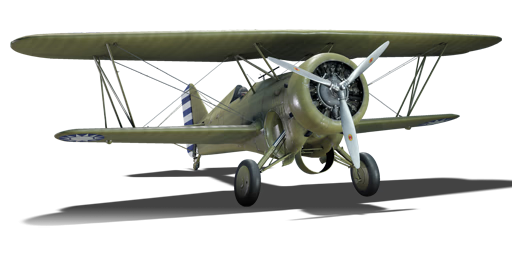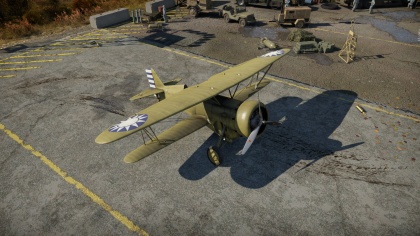Difference between revisions of "Hawk III"
(→History) (Tag: Visual edit) |
Inceptor57 (talk | contribs) (Readded section description as comments, Expanded history with detail and coherency) |
||
| Line 187: | Line 187: | ||
== History == | == History == | ||
| − | + | <!--Describe the history of the creation and combat usage of the aircraft in more detail than in the introduction. If the historical reference turns out to be too long, take it to a separate article, taking a link to the article about the vehicle and adding a block "/History" (example: <nowiki>https://wiki.warthunder.com/(Vehicle-name)/History</nowiki>) and add a link to it here using the <code>main</code> template. Be sure to reference text and sources by using <code><nowiki><ref></ref></nowiki></code>, as well as adding them at the end of the article with <code><nowiki><references /></nowiki></code>. This section may also include the vehicle's dev blog entry (if applicable) and the in-game encyclopedia description (under <code><nowiki>=== In-game description ===</nowiki></code>, also if applicable).--> | |
| − | + | The Hawk III, a modification of the US Navy BF2C-1 by Curtiss Aeroplane and Motor Company, addressed issues that was experienced during the latter's service. With a new Wright R-1820-F53 engine Cyclone engine and wooden wings (to fix a vibration issue with the metal wings of the BF2C-1), the Hawk III managed to be more flyable than its preceding design. | |
| − | ' | + | With the US Navy's soured experience with the BF2C-1, the Hawk III saw more sales in the export model. Argentina, Thailand, and China bought Hawk IIIs in the late 1930s. China alone bought 102 Hawk III planes from the United States between March 1936 to June 1938. |
| − | + | In the Sino-Japanese War, the Hawk III planes acted as the Chinese front-line fighters against Japanese aircraft. While able to stand against Japanese biplane models, the appearance of monoplanes like the [[A5M4|A5M]] shifted the balance towards the Japanese. As such, the Hawk III was slowly by Soviet [[I-15bis (China)|I-15]] and [[I-16 Chung 28|I-16]] fighter planes. | |
| − | + | The last surviving Hawk III aircraft resides in Thailand at the Royal Thai Air Force Museum. | |
== Media == | == Media == | ||
| Line 213: | Line 213: | ||
* [https://www.airliners.net/photo/Thailand-Air-Force/Curtiss-Hawk-III/392600 [<nowiki>airliners.net]</nowiki> Curtiss Hawk III - The only Hawk III fighter left in the world pictured in Thailand] | * [https://www.airliners.net/photo/Thailand-Air-Force/Curtiss-Hawk-III/392600 [<nowiki>airliners.net]</nowiki> Curtiss Hawk III - The only Hawk III fighter left in the world pictured in Thailand] | ||
| − | |||
{{AirManufacturer Curtiss}} | {{AirManufacturer Curtiss}} | ||
{{China fighters}} | {{China fighters}} | ||
{{China premium aircraft}} | {{China premium aircraft}} | ||
Revision as of 08:39, 20 February 2020
Contents
Description
The Hawk III is a premium rank I Chinese fighter
with a battle rating of 1.0 (AB/RB) and 1.3 (SB). It was introduced in Update 1.91 "Night Vision".
General info
Flight performance
Describe how the aircraft behaves in the air. Speed, manoeuvrability, acceleration and allowable loads - these are the most important characteristics of the vehicle.
| Characteristics | |||||||
|---|---|---|---|---|---|---|---|
| Stock | |||||||
| Max Speed (km/h at 4,850 m) |
Max altitude (meters) |
Turn time (seconds) |
Rate of climb (meters/second) |
Take-off run (meters) | |||
| AB | RB | AB | RB | AB | RB | ||
| ??? | ??? | 10700 | ??.? | ??.? | ??.? | ??.? | 274 |
| Upgraded | |||||||
| Max Speed (km/h at 4,850 m) |
Max altitude (meters) |
Turn time (seconds) |
Rate of climb (meters/second) |
Take-off run (meters) | |||
| AB | RB | AB | RB | AB | RB | ||
| 466 | 444 | 10700 | 13.0 | 13.3 | 19.3 | 15.2 | 274 |
Details
| Features | ||||
|---|---|---|---|---|
| Combat flaps | Take-off flaps | Landing flaps | Air brakes | Arrestor gear |
| X | X | X | X | ✓ |
| Limits | ||||
|---|---|---|---|---|
| Wing-break speed (km/h) |
Gear limit (km/h) |
Combat flaps (km/h) |
Max Static G | |
| + | - | |||
| N/A | ~12 | ~6 | ||
| Optimal velocities | |||
|---|---|---|---|
| Ailerons (km/h) |
Rudder (km/h) |
Elevators (km/h) |
Radiator (km/h) |
| < 240 | < 220 | < 400 | > 250 |
| Compressor (RB/SB) | ||
|---|---|---|
| Setting 1 | ||
| Optimal altitude | 100% Engine power | WEP Engine power |
| 2,926 m | 745 hp | 856 hp |
Survivability and armour
Examine the survivability of the aircraft. Note how vulnerable the structure is and how secure the pilot is, whether the fuel tanks are armoured, etc. Describe the armour, if there is any, and also mention the vulnerability of other critical aircraft systems.
Armaments
Offensive armament
The Hawk III is armed with:
- 2 x 7.62 mm Browning machine guns, -mounted (600 rpg = 1,200 total)
Suspended armament
The Hawk III can be outfitted with the following ordnance:
- Without load
- 4 x 100 lb AN-M30A1 bombs (400 lb total)
- 1 x 500 lb AN-M64A1 bomb + 4 x 100 lb AN-M30A1 bombs (900 lb total)
Usage in battles
Describe the tactics of playing in the aircraft, the features of using aircraft in a team and advice on tactics. Refrain from creating a "guide" - do not impose a single point of view, but instead, give the reader food for thought. Examine the most dangerous enemies and give recommendations on fighting them. If necessary, note the specifics of the game in different modes (AB, RB, SB).
Manual Engine Control
| MEC elements | ||||||
|---|---|---|---|---|---|---|
| Mixer | Pitch | Radiator | Supercharger | Turbocharger | ||
| Oil | Water | Type | ||||
| Controllable | Controllable Not auto controlled |
Not controllable Not auto controlled |
Not controllable Not auto controlled |
Separate | Not controllable 1 gear |
Not controllable |
Modules
| Tier | Flight performance | Survivability | Weaponry | ||
|---|---|---|---|---|---|
| I | Fuselage repair | Radiator | Offensive 7 mm | ||
| II | Compressor | Airframe | Mk.41 | ||
| III | Engine | New 7 mm MGs | |||
| IV | Wings repair | Engine injection | Cover | ||
Pros and cons
Pros:
- Large payload, good for destroying bases and ground targets
- Good maneuverability and speed when unladen
Cons:
- Armament is rather light
- Slightly lower payload weight than the equally ranked Hs 123 A-1
History
The Hawk III, a modification of the US Navy BF2C-1 by Curtiss Aeroplane and Motor Company, addressed issues that was experienced during the latter's service. With a new Wright R-1820-F53 engine Cyclone engine and wooden wings (to fix a vibration issue with the metal wings of the BF2C-1), the Hawk III managed to be more flyable than its preceding design.
With the US Navy's soured experience with the BF2C-1, the Hawk III saw more sales in the export model. Argentina, Thailand, and China bought Hawk IIIs in the late 1930s. China alone bought 102 Hawk III planes from the United States between March 1936 to June 1938.
In the Sino-Japanese War, the Hawk III planes acted as the Chinese front-line fighters against Japanese aircraft. While able to stand against Japanese biplane models, the appearance of monoplanes like the A5M shifted the balance towards the Japanese. As such, the Hawk III was slowly by Soviet I-15 and I-16 fighter planes.
The last surviving Hawk III aircraft resides in Thailand at the Royal Thai Air Force Museum.
Media
Excellent additions to the article would be video guides, screenshots from the game, and photos.
See also
Links to the articles on the War Thunder Wiki that you think will be useful for the reader, for example:
- reference to the series of the aircraft;
- links to approximate analogues of other nations and research trees.
External links
| Curtiss-Wright Corporation | |
|---|---|
| Fighters | BF2C-1 |
| P-36A · Rasmussen's P-36A · P-36C · P-36G | |
| P-40C · P-40E-1 · P-40F-10 | |
| Bombers | SB2C-1C · SB2C-4 |
| Floatplanes | SOC-1 |
| Experimental | XP-55 |
| Export | H-75A-1 · H-75A-4 · H-81A-2 · ▂P-40E-1 · ␗P-40E-1 · ▄P-40F-5 Lafayette · CW-21 · Hawk III |
| ▄SB2C-5 | |
| Captured | ▀Hawk H-75A-2 |
| China fighters | |
|---|---|
| British | ␗Gladiator Mk I |
| French | D.510C |
| Japanese | ␗A6M2 · ␗Ki-27 otsu · ␗Ki-43-III ko · ␗Ki-44-II hei · ␗Ki-61-I otsu · ␗Ki-84 ko |
| American | CW-21 · Hawk III · P-66 · ␗P-40E-1 · H-81A-2 · ␗P-43A-1 |
| ␗P-47D-23-RA · ␗P-47D-30 · ␗F-47N-25-RE · ␗P-51C-11-NT · ␗P-51D-20 · ␗P-51K | |
| Soviet | ␗I-15bis · ␗I-153 M-62 · ␗I-16 Chung 28 · ␗I-16 type 5 · ␗I-16 type 10 · ␗I-16 type 17 · ␗La-11 · ␗La-9 |
| China premium aircraft | |
|---|---|
| Fighters | ␗A6M2 · D.510C · ␗F-47N-25-RE · H-81A-2 · Hawk III · ␗Ki-45 hei/tei · ␗Ki-84 ko · ␗P-51C-11-NT |
| Jet fighters | Shenyang F-5 · J-7D |
| Strike aircraft | A-5C · ␗F-84G-31-RE |





